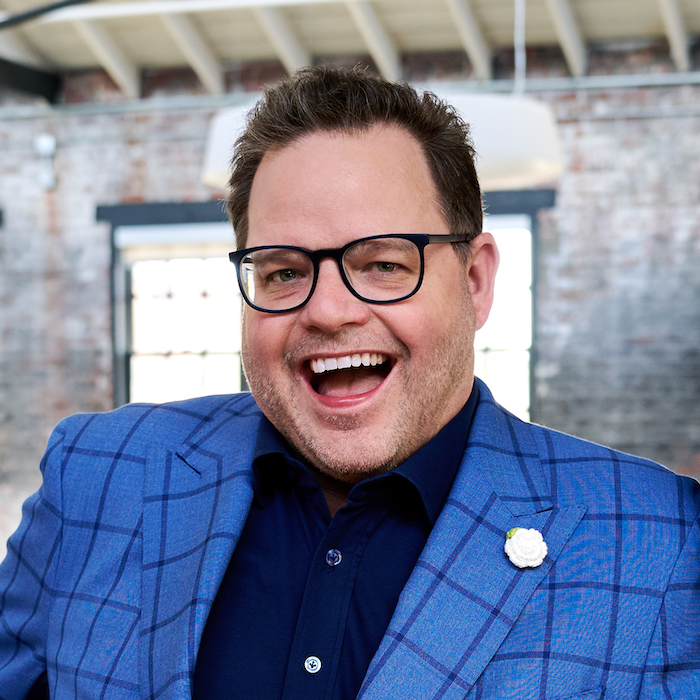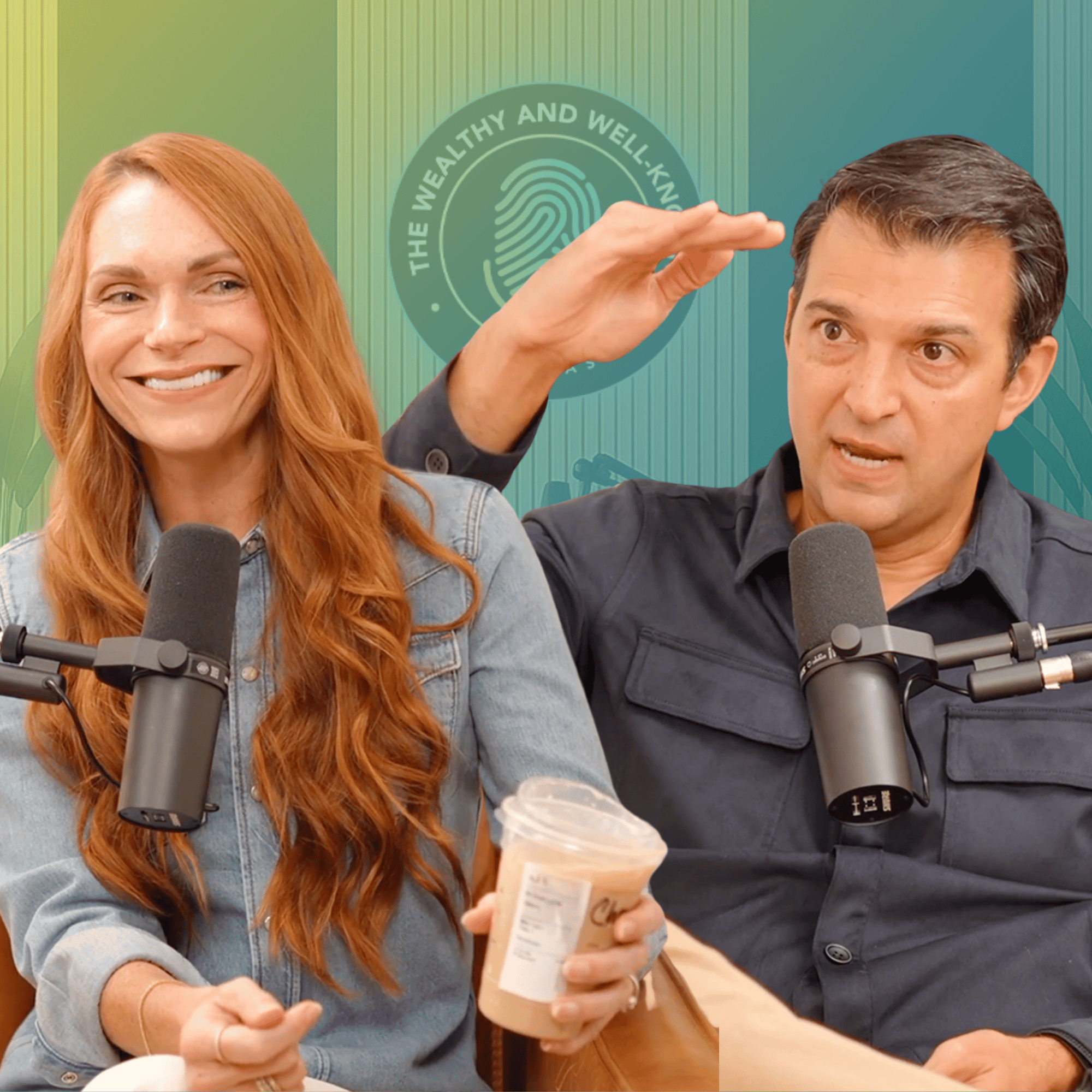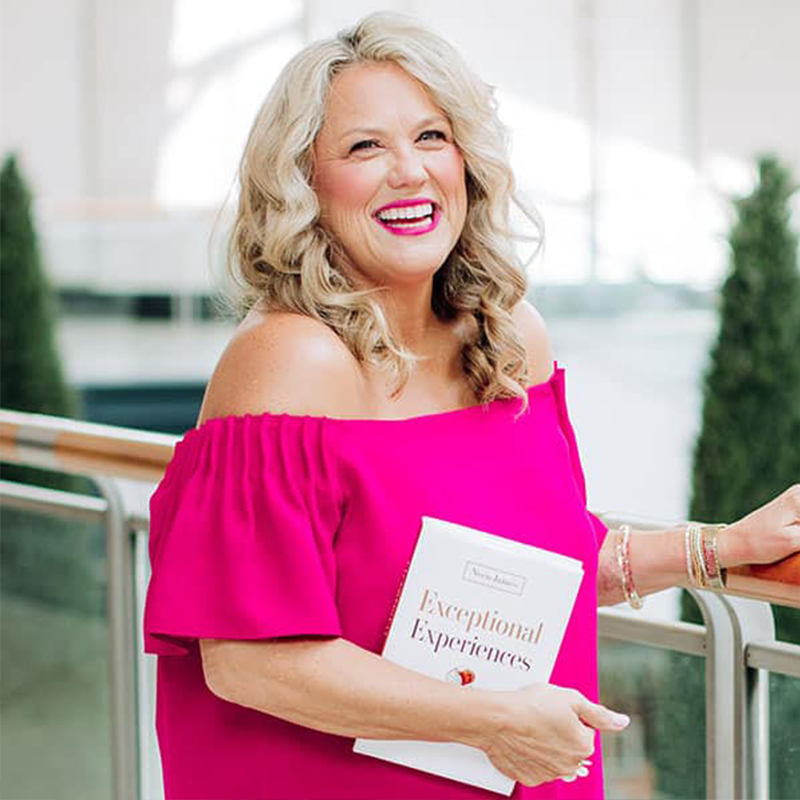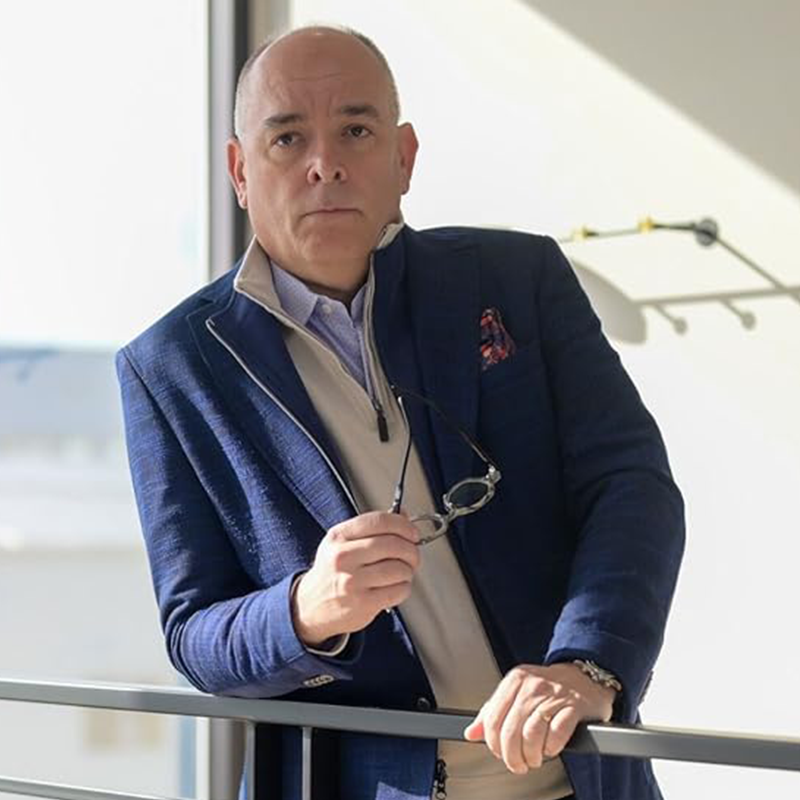RV (00:02):
Well, I am excited and honored to introduce you once again to one of my very best friends, one of my favorite mentors someone who I legitimately think is one of the smartest people on the planet. We’ve had him on the podcast before. His name is Jay Baer, Utruly one of my best friends in real life. And I’m so grateful for this man. And he has a new book out. And every time Jay writes a new book, it completely like changes the way I think about whatever the topic is. And we’re gonna talk about speed as a competitive advantage today. Uif you’re just meeting Jay, he is a New York Times bestselling author of seven books. He is a hall of fame speaker. He has worked with over 700 different brands. He speaks on some of the biggest stages in the world.
RV (00:48):
He’s worked for companies like Nike and Oracle and I b m and United Nations. And another thing we’ll probably talk about, which we’ve never talked about on this show before with Jay, but something fun happening is he has blown up on TikTok and Instagram, this personal brand. He is now the second, the world’s second largest influencer on tequila, which is something he does in his personal life. And it has become a huge explosive personal brand. So that’s kind of like a, a side project we’re gonna, we’re gonna talk about, but mostly we’re gonna be talking about his new book. It’s called The Time to Win. Without further ado, my brother, welcome back.
JB (01:33):
Thank you very much. Great to be with you, my friend. I gotta tell you, I’ve been a business strategist and author and speaker for like 30 years, and there’s been some degree of, of notoriety as a result of my behaviors and activities in that category. But now that I have a tequila education channel, I get recognized in hotels and airports, literally every week, . And it is never, never for the seven bestselling business books, never for the thousands of keynote presentation, tequila business a lot a lot longer ago maybe.
RV (02:22):
Yeah. So hold on a second there, buddy. So you cut out, I think I cut out. So just you were saying, I get recognized in airports every week.
JB (02:32):
Yeah. Every week for, for, and it’s always like, oh, you’re Tequila J Bear. I watch all of your videos. Like, nobody caress that I’ve written books. Nobody cares that I’ve ever given a presentation, but they are locked and loaded on the personal brand of tequila educators. So I think there’s a lesson there for, for you and your audience,
RV (02:51):
Man. Well, I do, I do. I I do want to hear about that because I, I, I, I’m curious, and it’s part of that is I have a side project, I’ve got like a personal side project going on right now. Yeah. That’s very similar.
JB (03:01):
I know. It’s exciting.
RV (03:02):
It has nothing to do with like our business, but it’s like, I have to do this. Yeah. But let’s talk about the time to win.
JB (03:10):
Yeah.
RV (03:11):
‘Cause this was something that I was like, it’s another one of those things where when you started talking about it, I was like, oh my gosh, how have I missed this? And you just blew it up. Like, oh, this is such a big idea, such a simple idea. So, so tell us, what’s the premise here? What’s going on? Yeah. And then the research that started it,
JB (03:28):
My, my observation coming outta the pandemic Rory, was that it changed the way we think about time and, and reshuffled how important it is in our lives. Time’s always been important, of course, but the pandemic made us remember a simple truth, an important truth, an often overlooked truth, which is that all of us only have and will ever only have 1,440 minutes a day. Doesn’t matter who you are, where you are, what you are, you get 1,440. You can’t make more. You can’t buy more. I’ll tell you this, I think now that I’ve been studying this for a while, I, I think time is the only resource that we actually share equally on this planet. The only one.
JB (04:13):
And a lot of the trends that we talk about now, things like the great resignation or people wanting to work from home don’t wanna come back from the office because they don’t wanna commute, or people spending more time with their kids or, or bleisure travel, which is the combination of business and leisure travel. That’s when you bring your kids to the conference and double dip the trip. Even baseball games are 25 minutes a night shorter now, right? Because they got a pitch clock. Like, all of these trends are the same trend, which is that we care about our time and how we spend it more than ever. So that was the, the premise. But as always, as you mentioned, when I, when I write a book, I first validate it with really deep research. ’cause I’m not gonna go on stages and pages and tell people to change their business unless I’ve got it proven other than just Jay says to do this. So it turns out that in the research we found that two thirds of people say that speed is now as important as price.
RV (05:09):
Wow. But
JB (05:10):
There’s not very many businesses that behave as if that were the case. And you should.
RV (05:16):
Yeah. I mean, that makes, I mean, you know, when you shared that with me, it was like, oh, yeah, that makes sense. As a consumer, I go, I, I just want it fast. Like, I don’t, you know, I think about the hotel thing. It’s like, I don’t wanna tell you my life story. I just want my key and get to the room. And like, I just wanna be like, it’s a long day of travel. It’s not that I wanna be rude, but it’s just like, I just want as fast as possible to get from the car into my hotel room to just chill out. Right? And then I go, but as a, as a business, how much are we really thinking about doing things shorter? We’re trying to go, maybe we make it better, better. Maybe we can charge more money, but not going, how do we do this faster?
JB (06:02):
That’s the mystery. That’s why this book, the Time to Win exists. What I tell people is you’ve gotta elevate speed and responsiveness on the priority list in your business because your customers already have.
RV (06:19):
Hmm. Like
JB (06:19):
Most businesses think they’re fast enough, but then when they look at the world through their own eyes as a consumer, they realize that they’re not fast enough. Partially because speed expectations never go backwards. Right? What was, what was fast five years ago is very slow today. And that will always continue. And I’ve been doing this a long time, as you know, I’ve never, in my whole life, under any circumstances whatsoever, heard a customer say, Hey, you know what? Next time it’d be cool if you guys just did that more slowly. like, those words have never been uttered. Right? So, so, you know, if you’re not constantly trying to iterate on responsiveness in your organization, you are falling behind every single day.
RV (07:03):
Yeah. And
JB (07:03):
I got, and the key, the key thing to this real quick, is that the reason why this book is so important now is that everything contained in this book is going to happen three years from now. We’re gonna have to delete this episode because it will be pointless. Everything we talk about will have been done by every business because your customers will simply require it of you. But this is your opportunity. This is why the book is called The Time to Win. This is your time to use responsiveness as a competitive advantage before other people in your category start to do it. You’ve got, in my estimation, a 24 to 30 month headstart where if you lean into speed, now you can eat your competitor’s lunch until they realize what’s going on and are forced to catch up.
RV (07:53):
Yeah. And I just on this, on this note of not priorit, prioritizing speed as a competitive, like not thinking of speed as a, as like a value to the customer. We had Amy Porterfield on, on this show a while back. You, she’s one of our clients and she’s sort of like the queen of courses, right? I know. You know, Amy and I, I asked her, I said, I said, you know, what’s the right price to charge for a course? And I said, I said, basically like, if, you know, if I have six modules or 10 modules, like how many modules do I have to have in there in order to charge $2,000? And she said, the price has nothing to do with how many modules are in there. She said, everyone thinks that having more modules makes it more expensive. She said, it’s the opposite. If you can deliver the result to the customer with less time and less modules, it’s more valuable to be able to get your customer from point A to point B. And I was just like, I literally have been thinking about this backwards in the pricing, you know, game. And then, and then you’re going, oh, you need to do this for every part of the business.
JB (09:08):
It, you go back to the 16 hundreds blaze, Pascal, a famous writer from, you know, those days said, I, I would’ve , I would’ve written a shorter letter, but I didn’t have time. . Right? It’s this idea that, that, you know, if you can deliver value in an hour, that value is geometrically greater than if you deliver the same thing in four hours. It, because it’s, it’s the net present value of the time you’re not spending in the course or, or doing anything else, right? Like in a, in a more prosaic example I got my house painted not long ago, and I got three bids as you do. ’cause I don’t know what things cost to be painted, neither do you. And first Painter called me back in like four hours and said, Jay, I can’t paint the house today. Obviously, I can’t even give you a quote, but, but I can tell you approximately, based on your voicemail, what I think it might cost.
JB (10:04):
And here’s when I can come give you an estimate. And here’s when I can come do the job. Second painter got back to me in two days. Third painter got back to me in 11 days. At which point I’d already painted the house . So a little slow. The, the one I hired was no surprise, the first one who was actually the most expensive. But I did not care, because today we live in an era where we interpret speed as caring, and we interpret responsiveness as respect. So it doesn’t matter who your customers are, if they think that you do not respect their time, that will create negative business consequences for you eventually.
RV (10:50):
Dude, whoa. That this, not just in your business life. This is one of the central marriage issues between me and aj. Responsiveness is her love language. And her, one of her frustrations is she’s like, you take forever to respond to my work emails ’cause we work together. But she’s like, you are so slow to respond to like, project deadlines and that stuff. And it’s like, she, she treats it as like, I’m disrespecting her. And I’m like, I’m busy. And she’s like, I don’t care. It’s, it is disrespecting. Like that is absolutely true. Responsiveness is, is a form of respect. Well, so, so you have this, you, so the time to win, which is, that’s the, the url, right? The time to win.com is where you’ll go to get the book. And y’all, just fyi, this book, Amazon, this book is a small book. You can read the entire book in an hour, like the entire book in an hour. It’s also, which
JB (11:53):
Is obviously intentional because I sat down to write a book and I’ve written six full length books in the past. And I started to work on this. And I’m like, wait, I, I cannot ask people to spend five or six hours reading a book about speed and just like, just like did. I’m like, wait a second. This is the exact opposite of the advice in the book. So it’s like, alright. And look, the reality is, and I, I’m not ashamed to admit it, the reality is most people don’t read business books. They skimm them,
RV (12:22):
Right? Because
JB (12:23):
Most business books say a thing, then they say that thing six different ways. And I’m like, you know what? I’m just gonna cut out the middleman here. No, no fat only meet all the key pieces that you need to implement. It’s a six piece framework for, for winning with responsiveness. And that’s all that’s in the book. There’s, you know, and boom, in and out. And people love it.
RV (12:43):
Yeah. And so, and so speed, like, okay, so, so now when you go, let’s apply, apply speed to business
JB (12:50):
Mm-Hmm. ,
RV (12:50):
You know, like the example that I used that construct is deliver the result for the client in less time. And we, we are super focused about on this right now. Yeah. Of now, now we’re going, we’re embracing this, right? And going, how do we get our client the result faster? How do we teach them the information in less time? How do we give them tools to help them implement, you know, like cheaper, faster. So there’s that construct of like con condensing the time for them to have the experience. But then it’s almost like there’s another half of this, which is responsiveness. So yeah. Which side is it? Is it both of those things? Or is it more one side than the other? Like
JB (13:35):
It’s both. We actually tested that in the research. So we asked people, and I, and I will say, this is very comprehensive research. This isn’t, Jay did a SurveyMonkey. This is many, many, many, many, many tens of thousands of dollars university level research. And we found when we asked people, okay, where is responsiveness most important to you? Early stages when you’re just trying to get information. Late stages. If you need help in the middle where somebody’s actually delivering whatever it is they’re delivering out, always . Turns out it’s always important. The places where it’s the most important is when you have an actual problem. No surprise, right? So if your house is on fire, access to water is really important, . But there’s never any point in the customer journey where speed and responsiveness isn’t important. And I will say this, it’s not just about the initial purchase or even Rory, the initial service delivery. Because one of the most interesting findings in this research is that 85% of customers 85 say that speed is a critical factor in their loyalty. So whether they buy a second, third, fourth, and fifth time,
RV (14:47):
Well,
JB (14:47):
How can that be? Well, remember if we interpret responsiveness as respect, at some point, every customer has to revalidate the buy. It could be a week later, it could be a month later, it could be a year later, it could be a decade later. But at some point in every customer and client relationship, they’ve gotta say, do I wanna sign on again? And so, yes, it’s important to be quick at the beginning of the relationship, but it’s also important to be quick throughout the totality of the relationship, because that’s going to ultimately impact whether or not they rebuy, which has of course, huge implications for your conversion rate, your churn rate, your lifetime customer value probably,
RV (15:28):
And
JB (15:28):
Everything else
RV (15:29):
That builds great
JB (15:30):
Business. All of it. Yeah.
RV (15:31):
All the things. So I wanna ask you about ai, ’cause I haven’t asked you about, about, about, mm-hmm. This, right? So the part that’s scary about this to me is to go absent ai, this is ha I think this is happening anyway, right? Absent, we’re just going like, I need an answer. I need it yesterday. I need it immediately. I want my food immediately. I want, you know, my show immediately. I want to be on the airplane immediately. I wanna be in my hotel room immediately. Like it’s, everything is speeding up. The part that freaks me out is you go, you add AI into this conversation. And now it’s like, dude, it’s just gotta be an exponential multiplier of this. Yep. Entitled, I need it immediately thing. Yeah,
JB (16:20):
Yeah, yeah. Probably. Yeah. And look, I, I’m not suggesting that this is a net societal positive that that’s not my job in the world. My job is to tell you how to beat your competition. And that’s contained in the book. Now, whether we’re beating the competition in a world where everybody is doing everything so fast that it becomes a little bit frustrating and, and a lot to handle. That’s probably, that’s probably true. But there’s nothing I can do about that. I mean, I think that, I think that that cow was out of the barn. What’s really amazing is the companies in many industries that are built for speed from the ground up,
RV (17:01):
Right? So
JB (17:02):
I think you were there one time when our, our mutual friend, Jason Dorsey was talking about Lemonade, which I use as an example. Now in the stage presentation of this material, lemonade is an insurance company. They primarily work in rental insurance, but others as well. They’re the number one rated rental insurance company in the country. Highest average revenue per employee as well. I mean, every success metric there at the top of the table. Here’s how it works. They were built for speed from the beginning. This guy, Paul has like a $979 Canada Goose, like Parka, super nice jacket, lives in Manhattan, goes to a bar in Manhattan. Someone steals the jacket. Oh man, my jacket got stolen. I gotta get a insurance claim. So he goes on the Lemonade app on his phone, presses, opens the app, presses file a claim, makes a 25 second video into his phone.
JB (17:56):
Hey, it’s Paul, I’ve had this Canada Goose jacket. It was $979 that got stolen at the bar. Submit after he hits, submit Lemonade, runs a bunch of fraud algorithms. Not only on the, on the video itself, but on Paul, his case history, the location, his age, a bunch of other stuff. They already have access to his bank account ’cause he did it. When he set it up, they decide to approve the claim. They wire $929 into his account because he is a $250 deductible. All of that happens, right? Assess the claim, approve the claim, wire him the cash. All of that happens in three seconds.
RV (18:36):
Holy smack.
JB (18:38):
Three seconds. So if you’re Allstate,
RV (18:42):
Yeah. Now
JB (18:43):
What? Now what?
RV (18:46):
I mean you don’t even, you’re trying to set an appointment to talk to the person and then the paperwork, and then you file the thing and take all the pictures and you fill out a police report. I mean
JB (18:57):
Yep. So now obviously, does Lemonade have a higher ratio of fraud than the alternative where like, you know, sitting down with somebody Of course. But one of the lessons in this book that I think is really applicable, it’s okay to be a little bit wrong if you’re a lot, a bit fast.
RV (19:17):
Ooh, that’s good. Yeah, it reminds me of like John De Julius says, you know, don’t punish 98% of your customers for what the 2% take advantage of.
JB (19:31):
Yeah. It’s an edge case.
RV (19:33):
Yeah. That’s so good about being a lot of, bit a, a lot, a bit fast. Well, so
JB (19:42):
Do you think, here’s something I wanna mention if I can. It’s a really important technique, especially for this audience that I wanna make sure we get to, is one of the key recommendations in this book. And it’s to offer a fast pass. So the idea of offering a fast pass is that in the research we found that one in four customers will pay as much as 50% more to not wait. You should give them that opportunity. Now, there are increasingly FastPasses all around us ’cause people are figuring out how powerful this technique is. TSA pre is a fast pass. You pay more. Wait list clear is a fast pass. Disney has one now, I think it’s called Genie Plus, we pay more. You don’t have to wait in line to go on Space Mountain or whatever,
RV (20:27):
Right?
JB (20:29):
You should do that in your business. Everybody should do it in their business. So when people come to me and say, will you review my new tequila? And I say, well sure, but we’ve got a 10 week waiting list. Or you can pay us this amount and you can be the next tequila we rate. All you’re doing is offering them a fast pass. Every sort of, every business in the world has a sequence, has an onboarding, has a customer list. You just charge them more to jump the line. Now, I was at an event and a guy came up to me and said, well Jay, what do I do about the person who was the next customer I was gonna help? And now they get bumped back one, aren’t they gonna be mad? Here’s how you do it. You say to the customer, who doesn’t wanna wait? Who wants to be the next, okay, it’s gonna cost you 20% more to be next. Then you talk to the person who was next and you say, I’m really sorry, something came up. We gotta bump you back. It’s gonna be an extra week. Now you’re second, but we’re gonna give you a 5% discount. ’cause We feel bad about it. You just kept 15% for doing nothing other than shuffling your customer sequence.
RV (21:31):
Mm-Hmm. ,
JB (21:33):
It’s free money.
RV (21:35):
Yeah. I mean, I’m that guy. I mean, I’m that guy. Like, it’s like I, I will pay. I do not wanna wait in long. You’re
JB (21:41):
Literally that guy. I
RV (21:42):
Will not, I will pay so much more to not wait in line. It’s the most frustrating thing that I experience is waiting. Like if my computer is loading, my internet is down, loading a webpage, you know, waiting in line at the grocery store, like waiting in line is probably the most frustrating thing in my life where I get angry. Like I am losing time. So, and I think probably that’s true. Like people who, the people who have, it’s
JB (22:11):
Not true for everybody. It’s not
RV (22:13):
True for everybody. It’s not true for everybody.
JB (22:14):
But for those who it is true for it’s manifestly true for like you,
RV (22:18):
And they will pay more money for it.
JB (22:20):
Absolutely.
RV (22:21):
They’ll pay more money. Won’t
JB (22:22):
Even bat an eye
RV (22:23):
Won’t even bad an eye. Yeah. No way. And it’s like, I don’t care if
JB (22:26):
You give ’em the choice,
RV (22:27):
The same experience as someone else, but I can just not have to, to have the weight. That’s so good, Jay. Like, that’s so simple. You know,
JB (22:34):
You’ll make so much money for, for free. Like, and it doesn’t matter if you’re a consultant, an author, a chiropractor, you’d run a preschool, you’ve got a landscape business, you’re doing plastic surgery, it does not matter.
RV (22:47):
Oh yeah, the country club,
JB (22:48):
What business you’re in club or getting into, it doesn’t matter.
RV (22:50):
Private, the private school, oh my gosh, like this is I’m trying to think about how we would apply this to brand builders group. We need to have a conversation about what, what can do, what we would, what we would do. So what else should I be asking you about this that I haven’t asked you about as it relates to speed as a competitive advantage?
JB (23:10):
The, I’ll tell you what the first piece that you’ve gotta do on this. Okay. lemme two, two quick things. One, I don’t want people to think that the takeaway here is Jay says, be as fast as possible all the time. That’s not true. And it’s also too simple. Yes, you should probably be faster than you are much of the time because your customers will reward you for it. If you give your customers time, they will give you money. If you cost your customers time, it will cost you money. So yes, you should probably be faster than you are much of the time. But there are scenarios when you can be too fast. When you are too fast, it decays trust. So if somebody came to you, Rory, and said, Hey I’ve got a book I’m writing, can you help me with a bestseller campaign? And you said, sure. Can you start in an hour? That would probably feel less trustworthy because if you’re that available,
RV (24:12):
Right?
JB (24:13):
Like, how could, could you be? Right? So what you want in your business is not necessarily to just be as fast as you can. What you want in every customer interaction is to adhere to the right now, the right now, the right now is the perfect amount of elapsed time. It’s not too fast and it’s not too slow. It’s the Goldilocks zone for speed. And you’ve gotta figure out what that is in your own business, right? There’s no standard for that. But for every business there is a, right now it’s the perfect amount of time. So the first assignment that you’ve gotta do as a business leader is to figure out what the right now is in your business.
RV (24:57):
Well, and the subtitle of your book, okay, so the book’s called The Time to Win. The subtitle is How to Exceed Customer’s Need for Speed. And the way that I go is part of what we know about the right now is it is at least a little bit faster than whatever their expectation is. That’s right. If, if we are, if we’re faster than their expectation than we’re winning, and then probably you know, the, then, then, then, then we’re ahead. So we probably need to look at what’s their expectation. But, but similar to how I remember like one the things
JB (25:32):
And how to set that expectation too. Like how to, how to actually manage that expectation. It’s one of the thing that, that a lot of businesses are terrible at this, they’re really bad at, at giving customers any sort of cue or clue as to what to expect. And one thing I’ve learned since I started down this, this research path is absent of any guidance, customers will expect everything to happen instantly.
RV (25:59):
Yeah. So
JB (25:59):
You’ve gotta tell them the thing that you want or need is going to take this long. And crucially, especially for younger consumers, here’s why it takes that long.
RV (26:14):
Uhhuh ,
JB (26:15):
You’ve gotta connect the dots for them. Because if you don’t, they will always think it should be faster. We learned this in the first day in business that you should always under promise and
RV (26:31):
Overdeliver,
JB (26:32):
Overdeliver. But you can’t do that if people don’t know what the promise is. So if you know it’s gonna take 10, 10 days, you always tell them it’s 12 days always. Because then you are slightly faster than they expect. And that’s the, right now
RV (26:53):
Uhhuh , the other thing is, so earlier in your career, you know, like one of the very first times I heard you speak and read your, your book utility around like content marketing and blew my mind, changed my whole life and strategy around building trust online and content and stuff. You know, you you, one of the things that you said in that book that really changed my life was you said, when you create content, you’re not just competing against other people who create content. Like the content you create, you’re creating against anything else in the world that competes for people’s attention. Cute puppy dogs, fantasy football, you know what reality tv. And so it’s like, it’s not just other business consultants that I’m competing against. I’m competing against that, that concept applied here. It’d be the same thing, right? It is going Yep. I’m not competing against other people. The speed is not just my competitors. I’m competing against lemonade and I’m competing against fast food and I’m competing against every single other customer experience. Sure. Of getting it done faster.
JB (28:02):
Yeah. I mean, you think about the world we live in, technology and big enterprise companies have changed everybody’s perspective on what is quote unquote fast. Like if Uber and Lyft didn’t exist, we would have a totally different perspective on transportation. But it does exist. And that experience of being able to press a button and a car shows up naturally leaches into your expectations for other things that you need in your life. And, and that’s just the way it is, right? So yeah. Does the fact that Amazon can bring something next day put a lot of pressure on a mom and pop business who doesn’t have that kind of warehouse? Heck yeah, it does. Freaking does. But but then, but them’s the breaks, like what, you know, sorry, that genie’s not going back in the bottle, right? Mm-Hmm. You know, well
RV (28:53):
That’s why I think about the AI thing, right? You know, it’s like in and bb in brand builders group. We don’t have like a queue, right? People can come, but where our, where our delay is, is helping our customers implement faster, right? Getting their funnels built, getting their website built, getting, and, and, and that’s where it’s like AI is going to compress that even more. Like you’re saying is just AI applied to every, you know, rising customer expec expectation, growing, you know, speeding up technology, adding in ai like you’re saying three years from now, five years from now, this is, this game is over. Like it all, we’re all gonna have to be instant. Yeah. And
JB (29:29):
That’s why you’ve got this chance now, right? If you lean into it sooner. If you don’t wait for your customers to pull you kicking and screaming and you lead them, you’ve got two, three years where you can dominate your category. You’ve just gotta get started.
RV (29:44):
I think this is so brilliant. This is like, you, you, you were, you were so ahead of the curve on content marketing, right? And it’s like, if I would’ve done then what you were saying about that, I would’ve caught that wave. We’d miss that wave. But like nobody else is talking about this. I mean, it’s like we talk about speed, but no one is going speed as a competitive advantage until you said that. And the moment you said it, I was like, that is so freaking brilliant. So the time to win.com is where to go to get the book
JB (30:13):
Yeah. Or Amazon or anywhere else that you get books at the time to win.com. There’s also the full research paper that powers the book. It’s like 30 pages and you can have, don’t we don’t even ask for email address, you can just have it. I just want you to have it. Cool.
RV (30:26):
That’s awesome. So that we can go download the research there. So we’ll put a link to the time to wind.com. Okay. I don’t wanna let you go without talking about Tequila J ’cause this is such a phenomenon. You spent 30 years of your life becoming one of the most respected consultants. You know, you after that you’ve amassed, I don’t know, a whopping 10,000 or followers or something on Instagram or something. And then you start Tequila Jay, this side project, give us a sense of the magnitude that this total, like my personal passion, hobby, give, give me a sense of the magnitude of how long you spent on it and what, what your reach has come with your, it’s truly like your personal, personal brand.
JB (31:10):
Well, first I, I’ll acknowledge that none of this would’ve happened without you, you know, your premise that, that your ideal audience is the person that you used to be
RV (31:19):
Is
JB (31:20):
The north star for my work in the tequila space. Because when I started this project which is just 18 months ago, there were a number of people creating content for advanced tequila fans, right? So there’s nerds talking to nerds, and I like that content. ’cause I’ve been a tequila fan for a long time. I like the kind of deep dive nerdy content, but I realized that there’s just not that many people in that category. There’s a lot more people who are just getting into tequila or have a margarita here and now, or have a Paloma here, and now that’s the much larger addressable audience. And so I always try and keep in mind what it was like to be a person who didn’t know much at all about tequila. And I was that person. It was a while ago, but, but I was that person. And so the content that we create is very intentionally pegged to the novice and intermediate tequila
JB (32:13):
Fan. And that’s been the lift underneath the whole project, right? That’s why it’s so popular because we’re not talking over people’s heads. Mm-Hmm. And it’s been a really interesting journey. We did it on Instagram reels and TikTok mostly because I don’t have a lot of experience historically with short form content. I’ve always done long form content. And I was like, well, let’s just see what this is. Like, let’s learn how this algorithm works, et cetera. And, and it’s been great. You know, five videos a week is a big lift. It’s a heavy lift you know, to do it every single week. But, but we love it. And now we’re really monetizing it across a bunch of different dimensions, right? We’ve got brand sponsors and tequila sponsors and a, a merch store and our own tequilas and a a and events business and private tastings. So there’s a bunch of different revenue streams that all kind of funnel into are in the business. And I’m not ready to quit my day job as a speaker and consultant yet, but, but it’s it’s definitely a real business, right? And considering my only goal was to be able to buy tequila on a business card instead of a personal card. I have, I have very much past, past the goals.
RV (33:19):
Well, the other thing is what’s gnarly is like you have pretty major celebrities reaching out to you.
JB (33:24):
Yeah, yeah.
RV (33:25):
Like, I mean Yeah. And you just built this huge audience. What, so it’s a couple hundred thousand followers, right? On TikTok? Yeah.
JB (33:31):
Between, yeah, between Instagram and TikTok. It’s a couple hundred thousand. Last month I think we reached 400,000 accounts. Wow.
RV (33:39):
So it’s,
JB (33:39):
It’s pretty, it’s pretty good group. Yeah.
RV (33:41):
And then you’re getting, you’re getting all these celebrities who are launching their tequila lines going, will you please review my
JB (33:47):
Absolutely. Yeah. And my house is just full of tequila. Allison is so mad because like every room of the house is just bottles. It’s, it’s literally a problem that I’m looking to solve. I have a, I have a shelving issue that I need to need to work on. .
RV (34:05):
Oh man. Yeah.
JB (34:06):
I mean, if I move this camera like six inches, you would be flabbergasted how much tequila I have in this office.
RV (34:12):
That’s awesome. So is there, is there any other lessons that you think for personal brands, like specifically? I mean, that’s super powerful. I didn’t, I didn’t, I never even realized to put that together that, you know, ’cause we you that that you, that’s what you were doing was specif specifically creating content for the person that you once were, you know?
JB (34:30):
Yeah. And I talk about that in a lot of podcasts and people ask me about tequila and I always give you credit as I should. And how powerful that that premise is. And it’s really, really effective. You know, look, we all have the curse of knowledge and the curse of expertise. And if you don’t constantly disvalue yourself of that notion, you are truncating your addressable audience. The other thing that we do in the tequila space that I think you’ll appreciate and your audience will appreciate is we are the only tequila educator that de anonymizes the audience. So there are a number of other people, four or five that do Instagram, TikTok stuff like me. There’s a handful of kind of YouTube tequila educators. There’s a couple of podcasts, et cetera. But we are the only ones who have a list. So I produce a list every quarter of my recommended tequila brands.
JB (35:19):
Mm-Hmm. , there are more than 2000 tequila brands, which is a lot. We have a list of about 35 that we really recommend people take that list with them to restaurants and bars and stores to make better buying decisions. So if you go to j tequila j tequila.com, I will ask for your email address and then I will send you the list and then I will send you updates every quarter. Well, we now have a house file of 40,000 people who have requested this list. So now we’ve got 40,000 emails. Nobody else has any emails in the whole category, which allows us to do tequila of the month and sell that to sponsors, which allows us to do all kinds of things because we can reach the audience whenever we want. Wow. We’re not beholden to the algorithm to put us in front of people. We can put ourselves in front of people. And I think that is something that everybody in the personal brand space has to remember. The gold is when you de anonymize the audience, right. Audience is important, but de anonymizing the audience so you know them and can reach them is actually the game.
RV (36:25):
Mm-Hmm. , I mean, it’s just interesting to go Yeah. Build the email list. Even, even in that space that’s like you, it’s a hobby kind of space and it’s just,
JB (36:33):
It’s,
RV (36:33):
It’s a game changer. It’s al it’s also amazing to me how it’s like, you have social media and you have lives and all this stuff, but like building the email list, it’s just like, it always just re still the, it’s still the holy grail. Like Yeah,
JB (36:46):
I mean, I I, I mean, it’s great to do lives and social media and everything else, but, but you know, if all of a sudden you know, meta decides that they’re not gonna do any alcohol content on the platform.
RV (36:59):
Yeah. You’re hosted
JB (37:01):
Business is over close up shop. Right. and that could ha I mean, that’s not a, that’s not that far fetched. Like that could definitely happen, right? So you know, you gotta un you know, you’ve gotta build reliable reach, not, not unreliable reach.
RV (37:17):
I love it. I love it. Well so j tequila.com is where people can go get that list if they’re, if they’re
JB (37:24):
Yeah. J tequila dot com is for the list. The merch store is tequila j bearer.com and yeah, we got, we got a lot of web properties. Now all of a sudden,
RV (37:33):
I mean, if you’re, and if you’re a tequila person, which I’m not, I don’t drink, but like, you just, like, you’ve gotta go see this, right? You gotta, and and even if you’re not a tequila person, I would go, go check this out because you’ll see, I’m
JB (37:45):
Still gonna send you a hat though ’cause the hats are pretty great. .
RV (37:48):
Well, I’m a hat person, so I could do, I could just, I know you’re, I can wear hats to soccer practice for the kids. So it’s really awesome, dude. But, but anyways, this speed as a competitive advantage blows my mind and scares the crap. It scares the crap outta me. And go, and I go, you know, this idea of going, how do we build brand builders group from the ground up from here for speed is like really has, has rocked my world and it’s, it’s affected us, right? So you know, I’ve been talking to you about instant automation toolkit, like this has been in development luckily for the last couple years, and we’re, we’re, we’re finally hitting, we’re finally about ready to release because it’s just like, that is the whole thing. Instant automation. It’s like we have to help people get this stuff deployed faster. So powerful stuff. Y’all. The time, the time to win is the book like it, this thing is, it’s so, it it fits in the palm of your hand. You read it an hour, get the, get the good stuff. So check it out. And it’s
JB (38:49):
Like nine bucks too. The book’s like $9. So if you don’t like it, let know. I’ll send you $9 back.
RV (38:54):
. Yeah, that’s, yeah, that’s good. Or, or a free bottle of tequila from that’s
JB (38:59):
More than $9. Yeah. Private.
RV (39:01):
We’ll figure private stash at the house. Like when you start emptying those out. Well,
JB (39:04):
Because, because I, because as you know you know, we live right by campus in Indiana University, so all of our neighbors are university students. And so I get sent a lot of tequila that I don’t want to keep because it’s not very good. So I’m just like, I’m, I’m like, I’m like
RV (39:16):
Dishing it out, walking
JB (39:17):
Through the neighborhood, like who wants a bottle of tequila and all. Yeah. The college students love me. That movie neighbors. Like I’m the Seth Rogan character in that movie. Yeah. It’s fantastic. Yeah.
RV (39:27):
I love it. Well brother, thanks for sharing your wisdom. We wish you the best and it’s a pleasure. You, you, you are, you are stud, my man. I’m so grateful for you and my life and for having you share your wisdom here.
JB (39:38):
You too. Say hi to AJ.

















